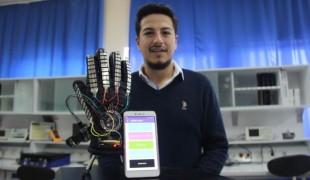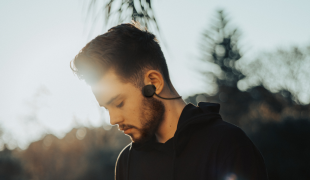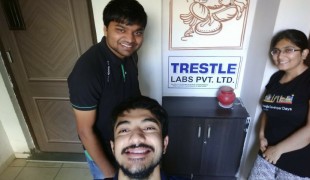- 4167
- 362
- 14
- 11
- 0
- Help Ukraine
About the solution
When Martin Grayson and Ed Cutrell followed a group of athletes and spectators with varying levels of vision on a trip from the United Kingdom to the 2016 for the Paralympic Games in Rio de Janeiro, Brazil, they began to pick up on clues that, even though there were a number of these athletes that could not see, an enriched understanding of social context was instilled on them, but unfortunately they could not seek the social cues necessary to perform this social interaction in the best way.
By observing how they interacted with other people, and even how they navigated through airports, attended a multitude of sporting venues, and even went sightseeing, this allowed the two collaborators to hoist key elements of social interaction, beginning with a very nuanced and elaborate sense of social understanding, which allows humans to modulate the way on how to interact with other people. Getting a sense of who is in the room, what they are doing, what is their relationship, and even if they are relevant to the person becomes an essential part of human interaction, which is stripped away from blind people.
With the help of Peter Bosher, an audio engineer who has been blind most of his life, the concept of a technology that provided information about the people around him resonated immediately, and thus project Tokyo was born with a partnership among researchers in the U.S., U.K., China, Japan, and India. By using HoloLens, these developers constructed a computer vision algorithm that provides varying levels of information about who is wherein the user’s environment. One model, for example, detects the pose of people in the environment, which provides a sense of where and how far away people are from the user, while another analyzes the stream of photos from the high-resolution camera to recognize people and determine if they have opted to make their names known to the system. All this information is relayed to the user through audio cues. There is also a LED strip fixed above the band of cameras which tracks the person closest to the user and turns green when the person has been identified to the user. Thus allowing partners or bystanders to know they’ve been seen, making it more natural to initiate a conversation.
Adapted from https://news.microsoft.com/innovation-stories/project-tokyo/
Learn more about the Project Tokyo and his developer here https://www.microsoft.com/en-us/research/people/cutrell/
DISCLAIMER: This story was written by someone who is not the author of the solution, therefore please be advised that, although it was written with the utmost respect for the innovation and the innovator, there can be some incorrect statements. If you find any errors please contact the patient Innovation team via info@patient-innovation.com or at carolina.piedade@patient-innovation.com directly.
This solution shall not include mention to the use of drugs, chemicals or biologicals (including food); invasive devices; offensive, commercial or inherently dangerous content. This solution was not medically validated. Proceed with caution! If you have any doubts, please consult with a health professional.
DISCLAIMER: This story was written by someone who is not the author of the solution, therefore please be advised that, although it was written with the utmost respect for the innovation and the innovator, there can be some incorrect statements. If you find any errors please contact the patient Innovation team via info@patient-innovation.com
-
-
410
-
2
-
4785

Student invents glove that translates sign language into text
COMMUNICATION: Communicating, whether by speaking, listening, or other means
Social interaction
Blindness
Visual Impairment
Hearing Disorders
Congenital Deafness
Speech Disorder
App (Including when connected with wearable)
Body-Worn solutions (Clothing, accessories, shoes, sensors...)
5 Senses support devices: (glasses, hearing aids, headphones...)
Vision problems
Difficulty speaking or understanding speech
Hearing loss or ringing in the ears (tinnitus)
Regaining sensory function
Promoting inclusivity and social integration
Improving Speech and Communication
Neurology
Ophthalmology
Otorhinolaryngology
Turkey
-
-
-
574
-
0
-
10881

Pedro, an acoustic engineer designed an open-ear hearable device in order to allow everyone to listen to music!
COMMUNICATION: Communicating, whether by speaking, listening, or other means
Hearing Disorders
5 Senses support devices: (glasses, hearing aids, headphones...)
Assistive Technology access
Body-Worn solutions (Clothing, accessories, shoes, sensors...)
Regaining sensory function
Promoting self-management
Promoting inclusivity and social integration
Improving Speech and Communication
Raise awareness
General and Family Medicine
Internal Medicine
Neurology
Otorhinolaryngology
Denmark
-
-
-
495
-
0
-
7083

Graduates team creates an app to help visually impaired in their education
Studying
Reading
COMMUNICATION: Communicating, whether by speaking, listening, or other means
Blindness
Assistive Daily Life Device (to help ADL)
App (Including when connected with wearable)
Online service
Vision problems
Promoting self-management
Promoting inclusivity and social integration
Improving Speech and Communication
To improve Treatment/Therapy
Raise awareness
Ophthalmology
India
-
 en
en